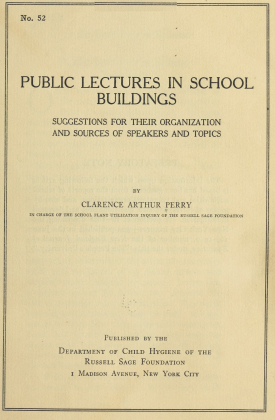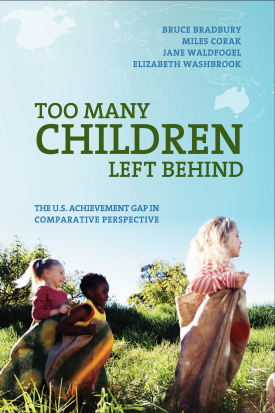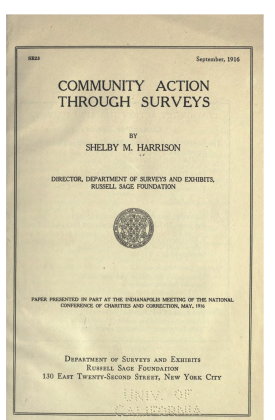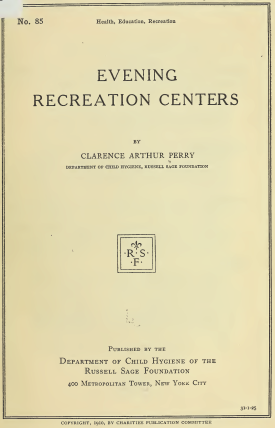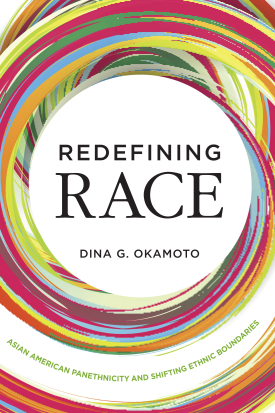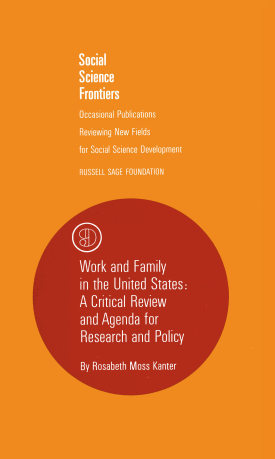Winner of the 2016 American Sociological Association’s Asia and Asian America Section Book Award
“In this well written and wide ranging book, Dina Okamoto puts forward a new theory describing the relationship between race, ethnicity, and assimilation among Asian Americans. This provocative racial boundary approach to understanding the identities and the incorporation of Asian Americans is a sophisticated and welcome contribution to the field. Using the case of Asian Americans it contributes to our understanding of the concepts and changing nature of race and ethnicity in general.”
—MARY C. WATERS, M.E. Zukerman Professor of Sociology, Harvard University
“Redefining Race redefines our understanding of the making of Asian America. By carefully articulating a theory of panethnicity as a process of shaping and shifting group boundaries, collecting data apposite to that theory, and designing demanding empirical tests, Okamoto expertly shows that Americans of diverse Asian backgrounds did not become panethnic overnight and ex nihilo as a passive response to state- constructed racial categories. Rather, Okamoto presents a vivid account of the accidents, opportunities, and contexts that fire up panethnic moments of collective action and douse them back into quiescence. Redefining Race is a major advancement and original contribution to the fields of immigrant incorporation, racial and ethnic formation, and Asian American studies.”
—TAEKU LEE, professor of political science and professor of law, University of California, Berkeley
“Through a sophisticated marshaling of theory and evidence from historical archives, interviews and social surveys, Dina Okamoto demonstrates how Americans of Japanese, Filipino, Korean, Chinese, Indian, Vietnamese, and other origins created an Asian American identity and Asian American institutions in the last quarter of the twentieth century. Despite disparate languages and conflicting histories, leaders of ethnic organizations defined by their nation of origin and others would strategically organize along panethnic lines when they found common interests rather than simply respond to the wider American society’s imposition of race. Okamoto’s Redefining Race is a new benchmark for understanding the social construction of ethnicity and ethnic identity.”
—EDWARD TELLES, professor of sociology, Princeton University
In 2012, the Pew Research Center issued a report that named Asian Americans as the “highest-income, best-educated, and fastest-growing racial group in the United States.” Despite this optimistic conclusion, over thirty Asian American advocacy groups challenged the findings, noting that the term “Asian American” is complicated. It includes a wide range of ethnicities, national origins, and languages, and encompasses groups that differ greatly in their economic and social status. In Redefining Race, sociologist Dina G. Okamoto traces the complex evolution of “Asian American” as a panethnic label and identity, emphasizing how it is a deliberate social achievement negotiated by group members, rather than an organic and inevitable process.
Drawing on original research and a series of interviews, Okamoto investigates how different Asian ethnic groups created this collective identity in the wake of the Civil Rights movement in the 1960s. Okamoto documents the social forces that encouraged the development of this panethnic identity. The racial segregation of Asians in similar occupations and industries, for example, produced a shared experience of racial discrimination, which led Asians of different national origins to develop shared interests and identities. By constructing a panethnic label and identity, ethnic group members created their own collective histories, and in the process challenged and redefined current notions of race.
The emergence of a panethnic racial identity also depended, somewhat paradoxically, on different groups organizing along distinct ethnic lines to gain recognition and rights from the larger society. According to Okamoto, ethnic organizations provided the foundation necessary to build solidarity within different Asian-origin communities. Leaders and community members who created inclusive narratives and advocated policies that benefited groups beyond their own moved their discrete ethnic organizations toward a panethnic model. For example, a number of ethnic-specific organizations in San Francisco expanded their services and programs to include other ethnic group members after their original constituencies dwindled in size or assimilated. A Laotian organization included refugees from different parts of Asia, a Japanese organization began to advocate for South Asian populations, and a Chinese organization opened its doors to Filipinos and Vietnamese. As Okamoto shows, the process of building ties between ethnic communities while also recognizing ethnic diversity is the hallmark of panethnicity.
Redefining Race is a groundbreaking analysis of the processes through which group boundaries are drawn and contested. In mapping the genesis of a panethnic Asian American identity, Okamoto illustrates the ways in which concepts of race continue to shape how ethnic and immigrant groups view themselves and organize for representation in the public arena.
DINA G. OKAMOTO is an associate professor of sociology and director of the Center for Research on Race and Ethnicity in Society at Indiana University.
